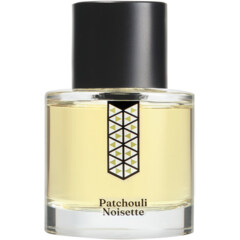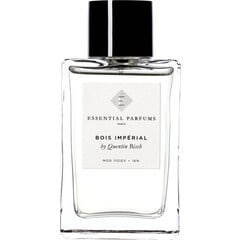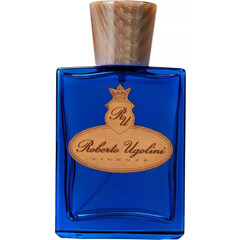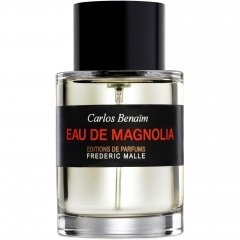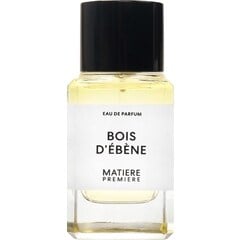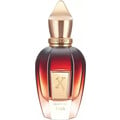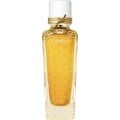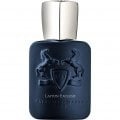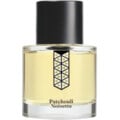
Jazzbob
Reviews
Filter & sort
Translated
Show original
Patchouli in its most beautiful form
As one of the undoubtedly most important natural raw materials for perfumes, patchouli enjoys a divided reputation these days - although the spectrum of how it can actually smell is extremely wide. In its cheapest and, for many, most unpleasant form, it smells musty and earthy, which is often compared to the smell of a damp cellar, but at the other end of the spectrum, patchouli is woodier, drier and sometimes a little cocoa-like
Les Indémodables' vision is to create perfumes that not only have a high proportion of high-quality, natural fragrances, but also to source them from small-scale, sustainable production as far away from the usual mass production as possible. The brand's website specifically states the following about Pachouli Noisette:
"This creation revisits a mythical fragrance ingredient: patchouli. It has been combined with an exclusive ingredient used for the very first time in perfumery: the ultrasound extract of Hazelnut from Piémont Italy designed internally using a 100% green extraction technology, and the world most qualitative origin of hazelnut! An accord which provides a delicate balance between the dark and rough side of patchouli with the incomparable soft praline facets of the hazelnut from Piémont.
Patchouli oil 'Grand Cru' Aceh Indonesia & Sri Lanka 35%
Hazelnut 'Grand Cru' Piémont Italy ultrasound 20% ETOH 8%
maturation: 2 weeks
maceration: 2 weeks"
In the interview by Dariush Alavi - known on YouTube as Persolaise Perfumes - with the owner Valérie Pulvérail, her husband Rémi - who talks about various raw materials in a very informative 'Masterclass' series at Persolaise - and perfumer Antoine Lie, you can find out more details about the creation of Patchouli Noisette. Although the latter had great creative freedom, he wanted to create a fragrance that went beyond the usual chypre or gourmand structure. According to his own statement, he also wanted to satisfy both those who love patchouli and those who otherwise reject it.
My very first impression was that the fragrance was particularly woody and had a certain dryness. Strangely enough, I also initially thought that Patchouli Noisette would quickly become skin-like, which I can now absolutely refute. For me, a whole new world full of different facets has opened up and with a few sprays you will definitely be well noticed for a long time. In addition to the pleasantly warm woody notes, there are also fruity nuances that add further richness. A subtle sweetness is also noticeable, while the hazelnut note shimmers through in an authentic form never before experienced in perfumes - only very gently, but not as boldly nutty and gourmand as is so often the case. I would attribute a slightly creamy quality to Patchouli Noisette later on, but, as I said, it never drifts into edibility.
Antoine Lie explains in the aforementioned interview (and on U Smells Good) that he did indeed use fruit molecules, some rose and lactones to create these effects. I also notice myself that the subtly dirty facets of patchouli still remain perceptible if you focus on them. Consequently, I would assume that people who do not otherwise have a soft spot for the fragrance would not necessarily wear this perfume themselves, but might well like it on others.
Patchouli Noisette has an effect on me that you can only experience for yourself, because words alone cannot do it justice. I can't even categorize it as modern or old-fashioned, because for me the fragrance is timeless, self-confident and powerful, but like a comforting embrace and definitely of French elegance. The most beautiful form of patchouli, which is independent of age and gender, but is simply a conscious choice.
Les Indémodables' vision is to create perfumes that not only have a high proportion of high-quality, natural fragrances, but also to source them from small-scale, sustainable production as far away from the usual mass production as possible. The brand's website specifically states the following about Pachouli Noisette:
"This creation revisits a mythical fragrance ingredient: patchouli. It has been combined with an exclusive ingredient used for the very first time in perfumery: the ultrasound extract of Hazelnut from Piémont Italy designed internally using a 100% green extraction technology, and the world most qualitative origin of hazelnut! An accord which provides a delicate balance between the dark and rough side of patchouli with the incomparable soft praline facets of the hazelnut from Piémont.
Patchouli oil 'Grand Cru' Aceh Indonesia & Sri Lanka 35%
Hazelnut 'Grand Cru' Piémont Italy ultrasound 20% ETOH 8%
maturation: 2 weeks
maceration: 2 weeks"
In the interview by Dariush Alavi - known on YouTube as Persolaise Perfumes - with the owner Valérie Pulvérail, her husband Rémi - who talks about various raw materials in a very informative 'Masterclass' series at Persolaise - and perfumer Antoine Lie, you can find out more details about the creation of Patchouli Noisette. Although the latter had great creative freedom, he wanted to create a fragrance that went beyond the usual chypre or gourmand structure. According to his own statement, he also wanted to satisfy both those who love patchouli and those who otherwise reject it.
My very first impression was that the fragrance was particularly woody and had a certain dryness. Strangely enough, I also initially thought that Patchouli Noisette would quickly become skin-like, which I can now absolutely refute. For me, a whole new world full of different facets has opened up and with a few sprays you will definitely be well noticed for a long time. In addition to the pleasantly warm woody notes, there are also fruity nuances that add further richness. A subtle sweetness is also noticeable, while the hazelnut note shimmers through in an authentic form never before experienced in perfumes - only very gently, but not as boldly nutty and gourmand as is so often the case. I would attribute a slightly creamy quality to Patchouli Noisette later on, but, as I said, it never drifts into edibility.
Antoine Lie explains in the aforementioned interview (and on U Smells Good) that he did indeed use fruit molecules, some rose and lactones to create these effects. I also notice myself that the subtly dirty facets of patchouli still remain perceptible if you focus on them. Consequently, I would assume that people who do not otherwise have a soft spot for the fragrance would not necessarily wear this perfume themselves, but might well like it on others.
Patchouli Noisette has an effect on me that you can only experience for yourself, because words alone cannot do it justice. I can't even categorize it as modern or old-fashioned, because for me the fragrance is timeless, self-confident and powerful, but like a comforting embrace and definitely of French elegance. The most beautiful form of patchouli, which is independent of age and gender, but is simply a conscious choice.
4 Comments
Translated
Show original
Synthetic in the best sense (but not only)
Pure natural fragrances often have the disadvantage of already seeming too dense - synthetics can help lighten them up, make them lighter. And then there's a wide world in between, as Akigalawood shows, for example. The fragrance is extracted from patchouli plant residue*, removing its more grimy facets and ultimately creating a very different impression. Bois Impérial is strongly influenced by it and various synthetic components, so that - as many here have already noticed - the comparison to Escentric Molecules suggests itself. The important difference is revealed in the fact that the latter often seem too soulless to me, while here the balancing act between synthetics and nature succeeds.
What I liked during the first tests is the fact that the fragrance already seems rather simple, but I could still filter out different nuances each time, which I had not noticed before or hardly. To begin with, there is not only the combination of the citrusy freshness, which is neither too sharp nor too sweet, with the dry woodiness (1), which runs through from beginning to end, but also a very subtle floral component (2). This doesn't make Bois Impérial seem floral, but adds even more brightness and some richness that would otherwise be lacking. Green freshness fits in just as well, whereby the vetiver note does not come across at all classic-old-fashioned, as is sometimes the case.
(1) Ambrofix = Ambroxan: If you know Molecule 02, you know what I mean.
(2) Petalia: "rose-like with nuances of lily of the valley." I would have thought of Hedion next to it.
The fragrance seems therefore consistently bright and transparent, because no heavy components complement the base accord, but with Georgywood (equivalent to Iso E Super, but is even woodier*) and Akigalawood always maintain an airy texture. The latter note is hard to describe, as it still has slightly earthy and green facets of patchouli, but just seems much lighter and cleaner. With Supræ of Aether (even drier) or Nisean of Parfums de Marly (darker, balsamic), for example, you can also perceive it well.
By the way, my girlfriend does not like the fragrance, because she immediately had the association with something pickled. Maybe that comes from the slight acidity and some spice. Now I feel the fragrance as a little softer than at the beginning, where I saw the dry-woody side as the most dominant. Possibly it needs some time to 'settle in'. For everyday wear, Bois Impérial is optimal, as the durability is really extremely good - especially on clothes. The sillage can also be easily underestimated and I have therefore rated it with 7, because you are not slain by the transparent effect of the fragrance, but at the same time he radiates relatively far.
Also, an important question with perfumes is how they make you feel when you wear them: Bois Impérial has on the one hand this lighthearted, universally wearable, on the other hand, the fragrance definitely has a mood-lifting effect.
[*Many thanks to Ronin for the tips.]
What I liked during the first tests is the fact that the fragrance already seems rather simple, but I could still filter out different nuances each time, which I had not noticed before or hardly. To begin with, there is not only the combination of the citrusy freshness, which is neither too sharp nor too sweet, with the dry woodiness (1), which runs through from beginning to end, but also a very subtle floral component (2). This doesn't make Bois Impérial seem floral, but adds even more brightness and some richness that would otherwise be lacking. Green freshness fits in just as well, whereby the vetiver note does not come across at all classic-old-fashioned, as is sometimes the case.
(1) Ambrofix = Ambroxan: If you know Molecule 02, you know what I mean.
(2) Petalia: "rose-like with nuances of lily of the valley." I would have thought of Hedion next to it.
The fragrance seems therefore consistently bright and transparent, because no heavy components complement the base accord, but with Georgywood (equivalent to Iso E Super, but is even woodier*) and Akigalawood always maintain an airy texture. The latter note is hard to describe, as it still has slightly earthy and green facets of patchouli, but just seems much lighter and cleaner. With Supræ of Aether (even drier) or Nisean of Parfums de Marly (darker, balsamic), for example, you can also perceive it well.
By the way, my girlfriend does not like the fragrance, because she immediately had the association with something pickled. Maybe that comes from the slight acidity and some spice. Now I feel the fragrance as a little softer than at the beginning, where I saw the dry-woody side as the most dominant. Possibly it needs some time to 'settle in'. For everyday wear, Bois Impérial is optimal, as the durability is really extremely good - especially on clothes. The sillage can also be easily underestimated and I have therefore rated it with 7, because you are not slain by the transparent effect of the fragrance, but at the same time he radiates relatively far.
Also, an important question with perfumes is how they make you feel when you wear them: Bois Impérial has on the one hand this lighthearted, universally wearable, on the other hand, the fragrance definitely has a mood-lifting effect.
[*Many thanks to Ronin for the tips.]
7 Comments
Translated
Show original
One for the money.
Some names of perfumes have to be taken literally, with others you have to see them more as a source of inspiration for a certain situation or attitude towards life. Such is the case with Blue Suede Shoes, as this isn't really a typical blue (aquatic/shower gel) scent - compared to some designers, anyway - and leather isn't a central note either. Instead, this aromatic fougère is meant to embody a bit of rock 'n' roll with the contrasts that are found here.
Of the top notes, bergamot and lavender make themselves rather more discreetly noticeable, while the spicy freshness is more powerful and is particularly characterized by a minty, cooling effect and fortunately not really reminiscent of anise. In addition, the coumarin sweetness (tonka bean) and a dry woody note (cedar) are immediately perceptible, giving Blue Suede Shoes a certain complexity without being too heavy. Over time, as usual, the freshness wears off and apart from some lavender, nothing remains of the top notes and the scent turns even more in the woody direction and patchouli comes out more, giving it a darker, more mature facet.
The eponymous song, written by Carl Perkins and made by Elvis Presley to the world hit, I personally find quite hackneyed and somewhat annoying - I feel the same way with a component, which can be clearly filtered out here: A very specific pungent, synthetic-woody scent I've come across many times - the examples range from Persil liquid laundry detergent to Xerjoff's Alexandria II - and has ruined quite a few perfumes for me with its penetrance. With Blue Suede Shoes, however, I have to say that this quality is just about on a tolerable level.
Otherwise, I like the fragrance quite well and also seems very balanced, although I would not exactly wear it in midsummer, because the freshness is not consistent enough for that. It applies as so often: do not trust the short paper test, but longer time on the skin smell. (Many fragrances seem fresher / brighter on paper strips.) With a more natural cedar note Blue Suede Shoes would be quite interesting for me, so it is too little for a niche fragrance.
Of the top notes, bergamot and lavender make themselves rather more discreetly noticeable, while the spicy freshness is more powerful and is particularly characterized by a minty, cooling effect and fortunately not really reminiscent of anise. In addition, the coumarin sweetness (tonka bean) and a dry woody note (cedar) are immediately perceptible, giving Blue Suede Shoes a certain complexity without being too heavy. Over time, as usual, the freshness wears off and apart from some lavender, nothing remains of the top notes and the scent turns even more in the woody direction and patchouli comes out more, giving it a darker, more mature facet.
The eponymous song, written by Carl Perkins and made by Elvis Presley to the world hit, I personally find quite hackneyed and somewhat annoying - I feel the same way with a component, which can be clearly filtered out here: A very specific pungent, synthetic-woody scent I've come across many times - the examples range from Persil liquid laundry detergent to Xerjoff's Alexandria II - and has ruined quite a few perfumes for me with its penetrance. With Blue Suede Shoes, however, I have to say that this quality is just about on a tolerable level.
Otherwise, I like the fragrance quite well and also seems very balanced, although I would not exactly wear it in midsummer, because the freshness is not consistent enough for that. It applies as so often: do not trust the short paper test, but longer time on the skin smell. (Many fragrances seem fresher / brighter on paper strips.) With a more natural cedar note Blue Suede Shoes would be quite interesting for me, so it is too little for a niche fragrance.
2 Comments
Translated
Show original
Good can be so simple
Rivegauche has already described Eau de Magnolia very aptly in his commentary, and I find the statement that the fragrance can be seen as a modern interpretation of Chanel's Cristalle particularly interesting. I like the eau de parfum version, but it lacks more freshness and the chypre base has a bit too much bitterness of oakmoss for my taste (even more in the eau de toilette). Eau de Magnolia actually goes in a very similar direction, however, exactly these problems have been fixed.
Striking when testing were for me on the one hand the perception on skin and paper and on the other hand the different intensity of sample and bottle. On paper, the bergamot is namely much more present and lets the fragrance come across even more citrus than on the skin. That's a bit of a shame, because I like most hesperides a lot, but the goal was to create a real Soliflor, after all. And sprayed from the bottle, the sillage is more powerful than from the sample and thus not to be underestimated, yet seems delicate and transparent at the same time. I'm not the great connoisseur of too many floral scents, but I think I can claim that magnolia is very authentically rendered here, as I perceive this one as bright, slightly fresh, clean, not really sweet, but minimally creamy. It also has quite a long-lasting airy quality which gives the impression that the scent is floating around you. As such, the magnolia is always clearly the center of attention, while after the bergamot fades, more and more of the slightly tart, green and only subtly woody base comes through. Amber I can not make out here at all.
Eau de Magnolia evokes consequently excellent the idea of standing in the midst of flowering shrubs / trees and works very spring-like, whereby the fragrance is wearable all year round due to the good balance. However, some might find it too slender and lacking in contrast. Every now and then I like such perfumes for a change and good things do not always have to be highly complex.
Striking when testing were for me on the one hand the perception on skin and paper and on the other hand the different intensity of sample and bottle. On paper, the bergamot is namely much more present and lets the fragrance come across even more citrus than on the skin. That's a bit of a shame, because I like most hesperides a lot, but the goal was to create a real Soliflor, after all. And sprayed from the bottle, the sillage is more powerful than from the sample and thus not to be underestimated, yet seems delicate and transparent at the same time. I'm not the great connoisseur of too many floral scents, but I think I can claim that magnolia is very authentically rendered here, as I perceive this one as bright, slightly fresh, clean, not really sweet, but minimally creamy. It also has quite a long-lasting airy quality which gives the impression that the scent is floating around you. As such, the magnolia is always clearly the center of attention, while after the bergamot fades, more and more of the slightly tart, green and only subtly woody base comes through. Amber I can not make out here at all.
Eau de Magnolia evokes consequently excellent the idea of standing in the midst of flowering shrubs / trees and works very spring-like, whereby the fragrance is wearable all year round due to the good balance. However, some might find it too slender and lacking in contrast. Every now and then I like such perfumes for a change and good things do not always have to be highly complex.
2 Comments
Translated
Show original
The Scent Detective - Ebony
For Bois d'Ébène, its creator Aurélien Guichard gives only four notes, which are supposed to give a dark, amber woody scent and which immediately made me take a closer look at what was actually going on here...
THE CASE EBENHOLZ
It is always exciting to observe how much marketing is done to almost every single perfume and how many people question that too little. For example, one hears with all the YouTubern almost exclusively formulations such as "this fragrance has ... in it" / "this contains ...". Fragrance notes primarily describe what is to be perceived, not necessarily what is actually used. Real rose absolute, for example, is much too expensive to be contained in so many perfumes. Ultimately, also only the question is important:
What do I smell?
With Bois d'Ébène, I immediately thought that the fragrance as a whole seemed very familiar. It essentially acts like the base accord of some woody, sweetened perfumes. In short, I perceive the following facets:
- the volatile (!) Top note is slightly ethereal resinous and cardamom comes to mind
- dry cedar wood or lightly scorched gujac wood
- a sandalwood component like Javanol
- a strong ambery facet, but not as clean as pure ambroxan, but discreetly dirty near the skin, which leads me to conclude Cetalox
- something sweet and creamy that was probably added in the form of vanillin and tonka bean (coumarin)
The color association to the precious ebony is thus quite appropriate, since the woods already seem a bit darker overall, but get a cozy atmosphere through the sweetish-creamy counterpole. But what is it about the notes that the perfumer indicates?
In a short video, he presents the fragrance concept (https://vimeo.com/375868040). The main ingredient, he says, is the dark and smoky guaiac wood from Paraguay, while Indonesian patchouli and cypriol (Nagarmotha) are said to intensify the fragrance and make it more earthy. Brazilian Cabreuva, on the other hand, would reinforce the amber facets and have an almost malty quality. If you pause at 0:49, however, you can read the handwritten components:
Ambroxan
Cypriol Essence
Iso E Super
Vertofix Coeur
Cashmeran
Cedramber
Amber Core
(Base Potion)
So it's pretty clear that Bois d'Ébène seems so familiar to me because it contains so many aromachemicals that are quasi-omnipresent in the world of woody/amber fragrances. Whether Aurélien Guichard now uses no essences of guaiac wood, patchouli and cabreuva, of course, can not be deduced exactly from this, but it just clarifies for us what I explained at the beginning.
Geographical information on the fragrances let them possibly not only appear more authentic, but also the clientele sometimes think, it would have been processed raw materials from all over the world. I want to put here in no way in denial that this also happens very often, but at the same time contribute something to the demystification of some evening adventurous, inventive fragrance pyramids. (Currently, for example, only 21 other fragrances can be found on Parfumo, where Cabreuva is indicated as a note.)
In my opinion, Bois d'Ébène is nevertheless successful, because it delivers what it promises - to be a dark, amber woody fragrance. No more and no less. Because it is relatively linear, one should already engage in at least one complete test day before buying it, to determine whether it does not become too monotonous in the long run. Because he creates a fairly long-lasting, moderate sillage, which make him a versatile companion in the colder seasons.
EDIT 04/05/2022:
In the livestream of Persolaise on YouTube, Aurélien Guichard answered (diplomatically) my question about how many natural ingredients he uses for the fragrance: he elaborated that his intention was to make guaiac wood (the main ingredient), darker and he deliberately resorted to cypriol and patchouli for that, and cabreuva as another wood. Synthetic ingredients are necessary to create a modern perfume and he does not think much of purely natural perfumes (which hardly exist).
THE CASE EBENHOLZ
It is always exciting to observe how much marketing is done to almost every single perfume and how many people question that too little. For example, one hears with all the YouTubern almost exclusively formulations such as "this fragrance has ... in it" / "this contains ...". Fragrance notes primarily describe what is to be perceived, not necessarily what is actually used. Real rose absolute, for example, is much too expensive to be contained in so many perfumes. Ultimately, also only the question is important:
What do I smell?
With Bois d'Ébène, I immediately thought that the fragrance as a whole seemed very familiar. It essentially acts like the base accord of some woody, sweetened perfumes. In short, I perceive the following facets:
- the volatile (!) Top note is slightly ethereal resinous and cardamom comes to mind
- dry cedar wood or lightly scorched gujac wood
- a sandalwood component like Javanol
- a strong ambery facet, but not as clean as pure ambroxan, but discreetly dirty near the skin, which leads me to conclude Cetalox
- something sweet and creamy that was probably added in the form of vanillin and tonka bean (coumarin)
The color association to the precious ebony is thus quite appropriate, since the woods already seem a bit darker overall, but get a cozy atmosphere through the sweetish-creamy counterpole. But what is it about the notes that the perfumer indicates?
In a short video, he presents the fragrance concept (https://vimeo.com/375868040). The main ingredient, he says, is the dark and smoky guaiac wood from Paraguay, while Indonesian patchouli and cypriol (Nagarmotha) are said to intensify the fragrance and make it more earthy. Brazilian Cabreuva, on the other hand, would reinforce the amber facets and have an almost malty quality. If you pause at 0:49, however, you can read the handwritten components:
Ambroxan
Cypriol Essence
Iso E Super
Vertofix Coeur
Cashmeran
Cedramber
Amber Core
(Base Potion)
So it's pretty clear that Bois d'Ébène seems so familiar to me because it contains so many aromachemicals that are quasi-omnipresent in the world of woody/amber fragrances. Whether Aurélien Guichard now uses no essences of guaiac wood, patchouli and cabreuva, of course, can not be deduced exactly from this, but it just clarifies for us what I explained at the beginning.
Geographical information on the fragrances let them possibly not only appear more authentic, but also the clientele sometimes think, it would have been processed raw materials from all over the world. I want to put here in no way in denial that this also happens very often, but at the same time contribute something to the demystification of some evening adventurous, inventive fragrance pyramids. (Currently, for example, only 21 other fragrances can be found on Parfumo, where Cabreuva is indicated as a note.)
In my opinion, Bois d'Ébène is nevertheless successful, because it delivers what it promises - to be a dark, amber woody fragrance. No more and no less. Because it is relatively linear, one should already engage in at least one complete test day before buying it, to determine whether it does not become too monotonous in the long run. Because he creates a fairly long-lasting, moderate sillage, which make him a versatile companion in the colder seasons.
EDIT 04/05/2022:
In the livestream of Persolaise on YouTube, Aurélien Guichard answered (diplomatically) my question about how many natural ingredients he uses for the fragrance: he elaborated that his intention was to make guaiac wood (the main ingredient), darker and he deliberately resorted to cypriol and patchouli for that, and cabreuva as another wood. Synthetic ingredients are necessary to create a modern perfume and he does not think much of purely natural perfumes (which hardly exist).
7 Comments

 Jazzbob
Jazzbob